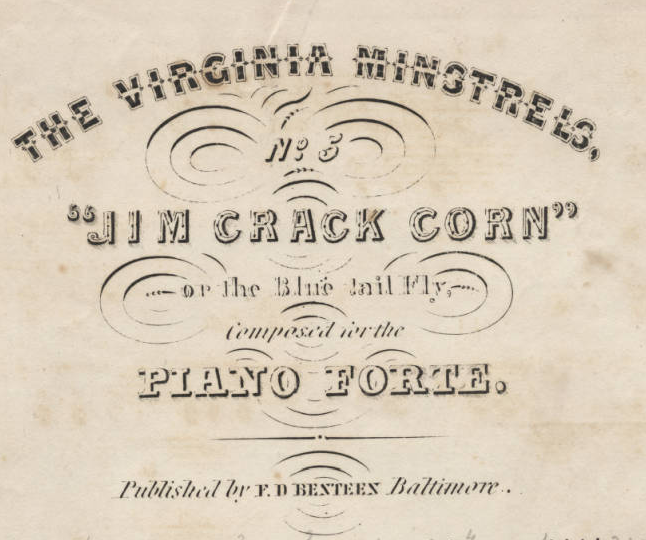Written by Mason Vander Lugt, Syracuse University catalog librarian and proprietor of the historical music blog Dinosaur Discs.
The ‘Blue Tail Fly’, or ‘Jim Crack Corn’, dates back to Jan. 1846, the heyday of American minstrelsy. It tells a story of a young slave and his master and reflects some nuance of the race dynamics of the Southern United States before the Civil War. While many minstrel songs whitewash the slaves’ experience by narrating a sentimentality for the land or their masters, “Blue Tail Fly” sneaks in a joke by suggesting that the slave may have intentionally caused his master’s death, or at least been pleased by it after the fact.
The meaning of “Jim (or Jimmy) Crack Corn” has been the subject of much debate, but some suggest it meant that the slave could ‘crack [a bottle of] corn [whiskey]’ (now that the master is gone), or that ‘jimmy’ meant ‘gimme’ and cracked corn, unripe green corn only suited for corn meal porridge. Considering the alternate contemporary line “an’ scratch ‘im with a brier, too”, I like the first interpretation.
For a straightforward history of Dan Emmett and American minstrelsy, check out Hans Nathan’s “Dan Emmett and the Rise of Early Negro Minstrelsy“. For a discussion of the complex forces that created minstrelsy, and its extended (and continuing) effects on American culture, see Eric Lott’s “Love and Theft: Blackface Minstrelsy and the American Working Class“.


